Abstract
The Human Genome Project holds much promise for providing dramatic improvements in our understanding of and means to diagnose and treat many diseases. As this enormously important endeavor proceeds, research on ethical, legal, and social implications of this new science is being conducted to forecast problems and recommend policy option solutions to avoid what might otherwise become adverse consequences. Sickle cell screening is an example of a technology that was introduced in a manner that raised poignant issues. On the basis of sickle cell issues, we examined policy issues likely to occur as new genetic technologies are incorporated into medical practice. Discussion and development of a national consensus on the appropriate content and just delivery of public sector genetic services is vital; otherwise, the impact of Human Genome Project-derived technology may result in misadventures that amplify problems currently evident in newborn screening programs. New DNA-based diagnostic technologies and therapies will soon enter the stream of commerce. The recommendations offered here, while based on examination of sickle cell disease policies, are intended to address both current inequities as well as potential future issues related to stigmatization and distributive justice.
Full text
PDF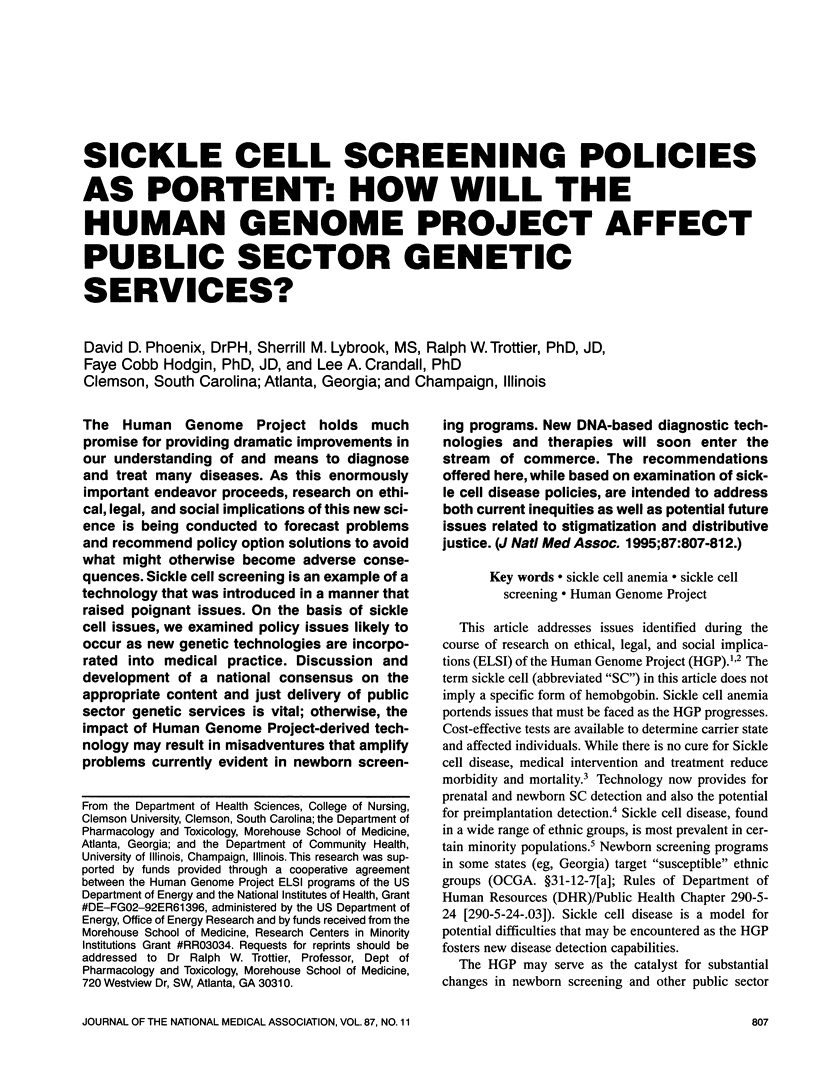
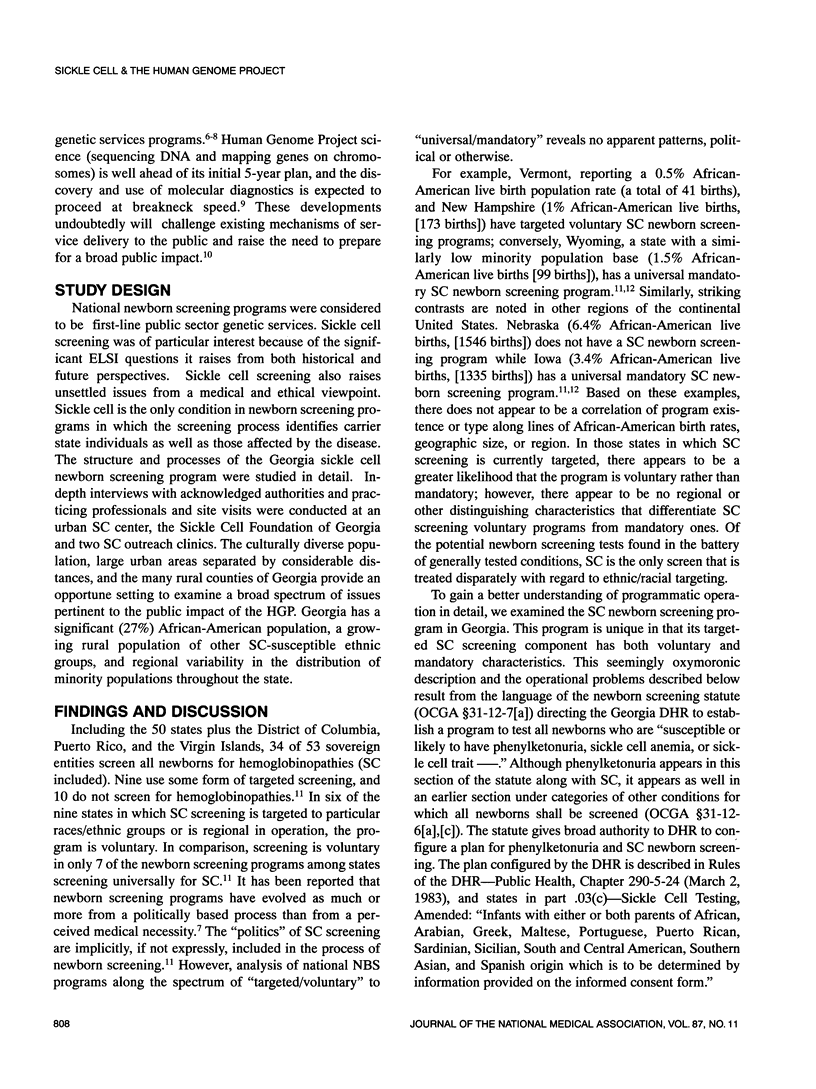
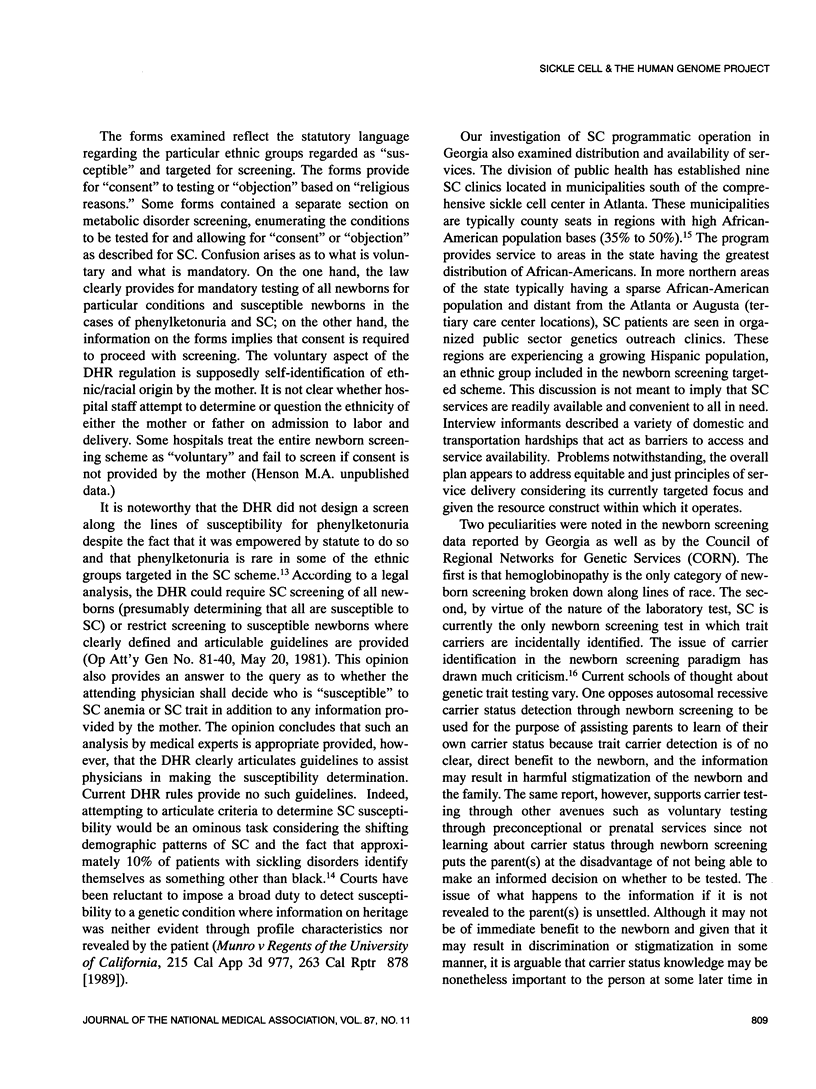
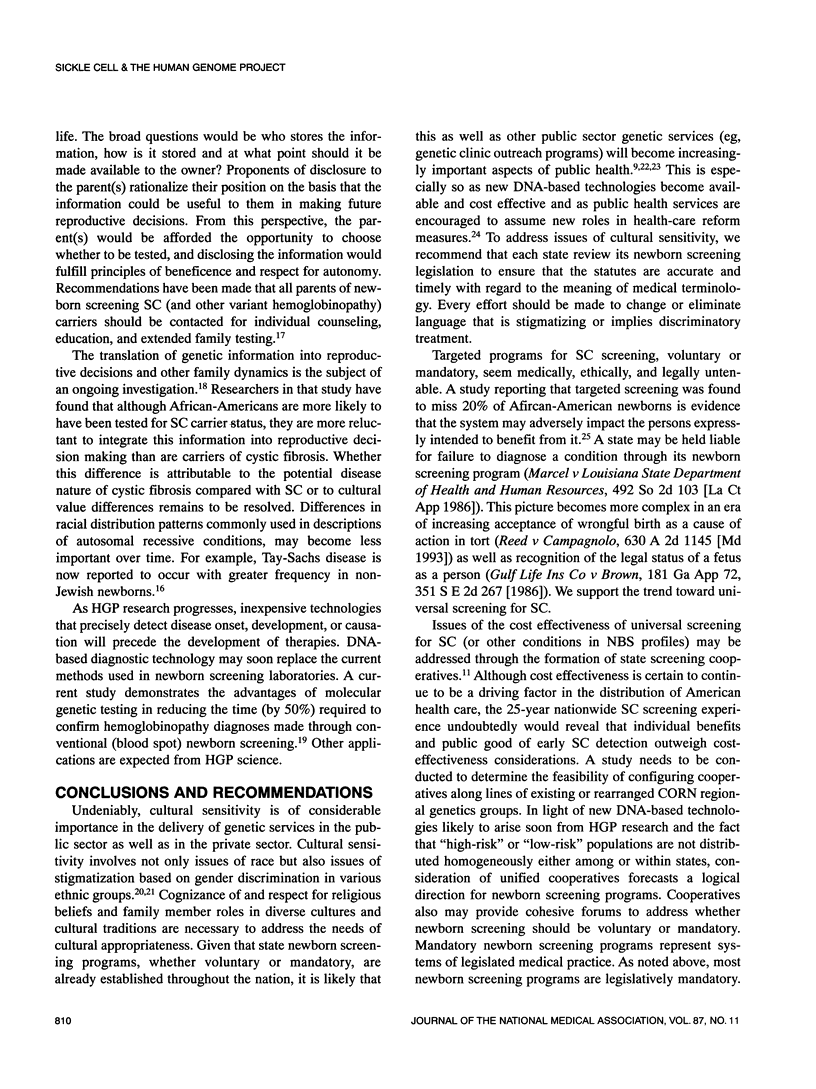
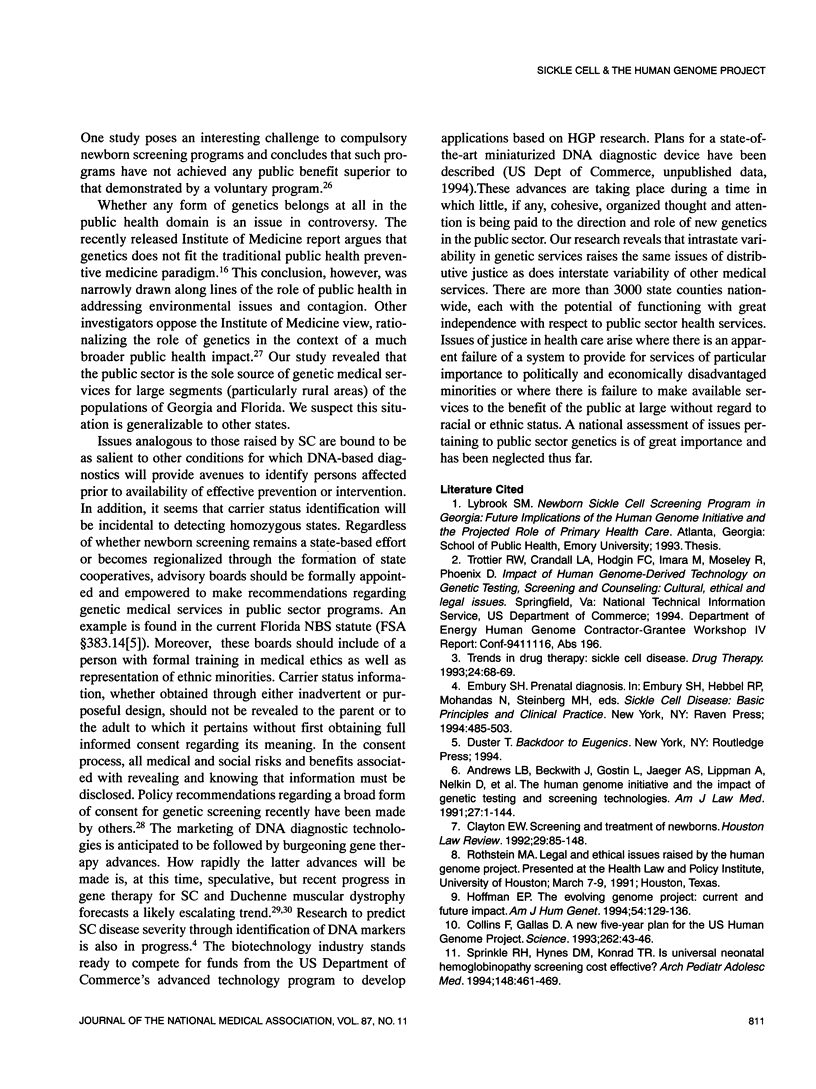
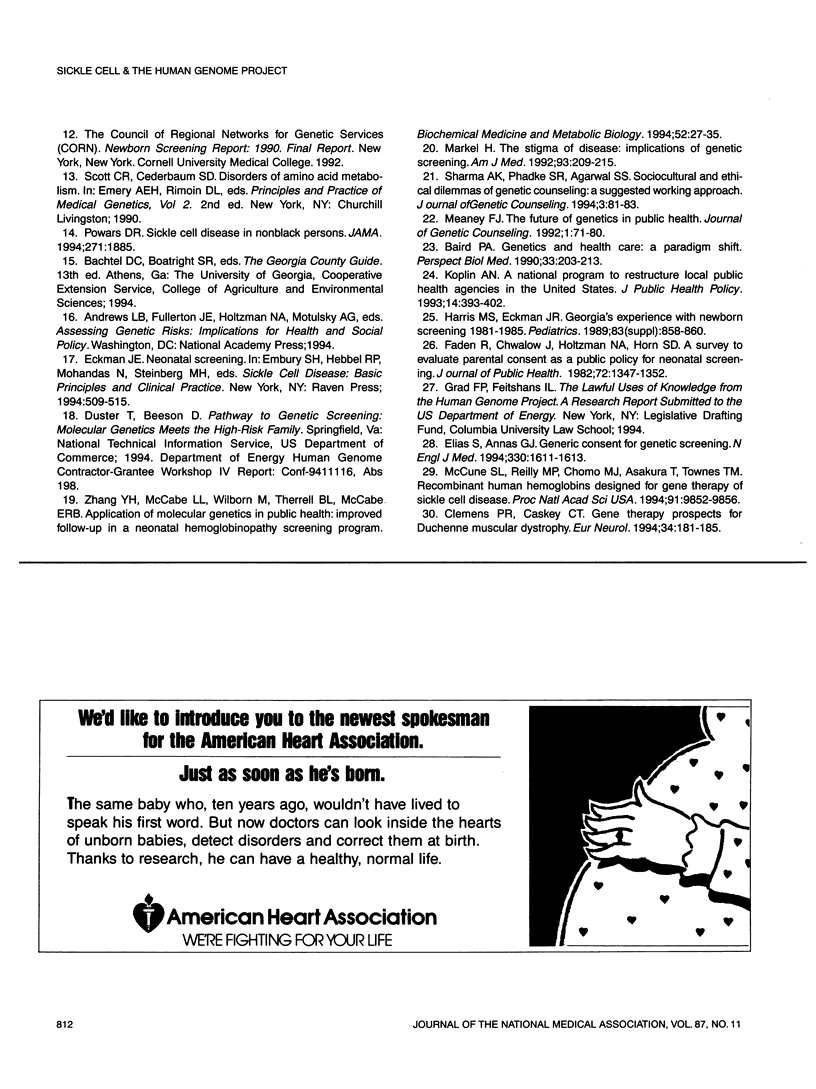
Selected References
These references are in PubMed. This may not be the complete list of references from this article.
- Baird P. A. Genetics and health care: a paradigm shift. Perspect Biol Med. 1990 Winter;33(2):203–213. doi: 10.1353/pbm.1990.0009. [DOI] [PubMed] [Google Scholar]
- Beckwith J. Foreword: the human genome initiative: genetics' lightning rod. Am J Law Med. 1991;17(1-2):1–13. [PubMed] [Google Scholar]
- Clayton Ellen Wright. Screening and treatment of newborns. Houst Law Rev. 1992 Spring;29(1):85–148. [PubMed] [Google Scholar]
- Clemens P. R., Caskey C. T. Gene therapy prospects for Duchenne muscular dystrophy. Eur Neurol. 1994;34(4):181–185. doi: 10.1159/000117035. [DOI] [PubMed] [Google Scholar]
- Collins F., Galas D. A new five-year plan for the U.S. Human Genome Project. Science. 1993 Oct 1;262(5130):43–46. doi: 10.1126/science.8211127. [DOI] [PubMed] [Google Scholar]
- Faden R., Chwalow A. J., Holtzman N. A., Horn S. D. A survey to evaluate parental consent as public policy for neonatal screening. Am J Public Health. 1982 Dec;72(12):1347–1352. doi: 10.2105/ajph.72.12.1347. [DOI] [PMC free article] [PubMed] [Google Scholar]
- Harris M. S., Eckman J. R. Georgia's experience with newborn screening: 1981 to 1985. Pediatrics. 1989 May;83(5 Pt 2):858–860. [PubMed] [Google Scholar]
- Hoffman E. P. The Evolving Genome Project: current and future impact. Am J Hum Genet. 1994 Jan;54(1):129–136. [PMC free article] [PubMed] [Google Scholar]
- Koplin A. N. A national program to restructure local public health agencies in the United States. J Public Health Policy. 1993 Winter;14(4):393–402. [PubMed] [Google Scholar]
- Markel H. The stigma of disease: implications of genetic screening. Am J Med. 1992 Aug;93(2):209–215. doi: 10.1016/0002-9343(92)90052-d. [DOI] [PubMed] [Google Scholar]
- McCune S. L., Reilly M. P., Chomo M. J., Asakura T., Townes T. M. Recombinant human hemoglobins designed for gene therapy of sickle cell disease. Proc Natl Acad Sci U S A. 1994 Oct 11;91(21):9852–9856. doi: 10.1073/pnas.91.21.9852. [DOI] [PMC free article] [PubMed] [Google Scholar]
- Powars D. R. Sickle cell disease in nonblack persons. JAMA. 1994 Jun 15;271(23):1885–1885. doi: 10.1001/jama.271.23.1885. [DOI] [PubMed] [Google Scholar]
- Sprinkle R. H., Hynes D. M., Konrad T. R. Is universal neonatal hemoglobinopathy screening cost-effective? Arch Pediatr Adolesc Med. 1994 May;148(5):461–469. doi: 10.1001/archpedi.1994.02170050019004. [DOI] [PubMed] [Google Scholar]
- Zhang Y. H., McCabe L. L., Wilborn M., Therrell B. L., Jr, McCabe E. R. Application of molecular genetics in public health: improved follow-up in a neonatal hemoglobinopathy screening program. Biochem Med Metab Biol. 1994 Jun;52(1):27–35. doi: 10.1006/bmmb.1994.1030. [DOI] [PubMed] [Google Scholar]


